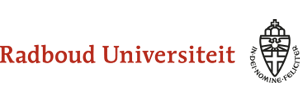American English Phonetics
Another American English Faculty Project
1.5 The consonants of GA
The C-system of GA falls into the following groups: sonorants and obstruents.
Sonorants are subdivided into nasals, during which air escapes through the nose, and approximants, for which this is not the case.
| nasals | approximants |
|---|---|
| /m/ meal | /l/ lip |
| /n/ Neil | /r/ rip |
| /ŋ/ sing | /j/ yes |
| /w/ well |
Obstruents are further subdivided into stops (also known as plosives /ˈploʊsɪvs/) and fricatives. In addition, there are two affricates, /t͡ʃ/ and /d͡ʒ/, as in cheek and Jack, respectively. They are normally considered to be single consonants, but could also be regarded as combinations of /t,d/ and /ʃ,ʒ/.
| stops | fricatives | affricates |
|---|---|---|
| /p,b/ pond, bond | /f,v/ feel, veal | / t͡ʃ, d͡ʒ/ cheek, Jack |
| /t,d/ tan, Dan | /θ,ð/ think, this | |
| /k,g/ cold, gold | /s,z/ sink, zinc | |
| /ʃ,ʒ/ ash, beige | ||
| /h/ hall |
There is a different way in which obstruents can be subdivided: there is a fortis set /p, t, k; f, θ, s, ʃ; t͡ʃ/, and a lenis set /b, d, ɡ; v, ð, z, ʒ; d͡ʒ/. The difference between fortis and lenis obstruents is very important, as we will see later.
Note: The symbol [t̬] is used for a so called flapped t, as in city /ˈsɪt̬i/.
